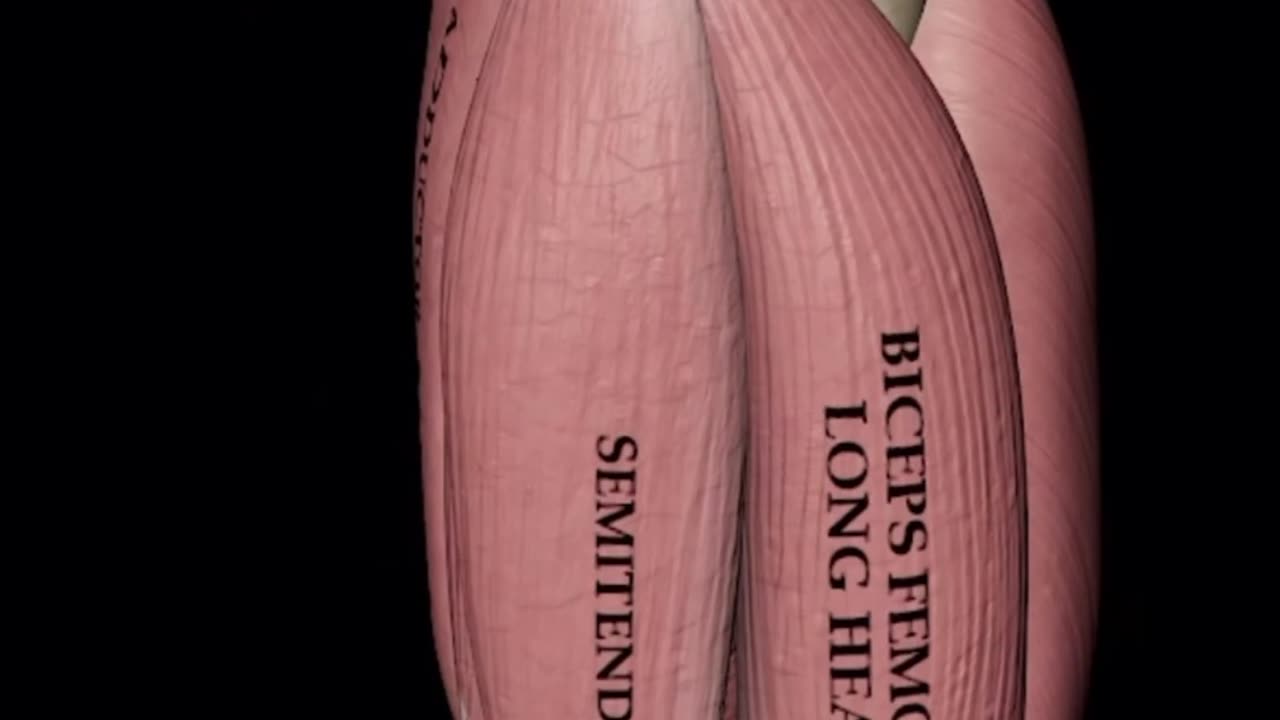Premium Only Content

Piriformis muscle
Piriformis is a muscle of the gluteal region which lies deep to the gluteus maximus. Piriformis belongs to a group of six short external rotators of the hip , i.e. gemellus superior, obturator internus, gemellus inferior, quadratus femoris, obturator externus. Attaching to the sacrum on one end and the greater trochanter on the other one, this muscle is reponsible for stabilising the hip joint and moving the thigh in various directions.
This is a flat pyramid-shaped muscle that arises from the anterior surface of the sacrum, between the sacral foramina. It passes laterally to exit the bony pelvis through the greater sciatic foramen, often attaching to the gluteal surface of the ilium, close to the posterior inferior iliac spine. It inserts onto the apex of the greater trochanter, posterosuperior to the insertion site of the conjoined tendon of gemellus superior, obturator internus and gemellus inferior.
The muscle divides the greater sciatic foramen into two foramina (suprapiriform and infrapiriform). The superior gluteal artery and nerve (L4-S1) leave the pelvis through the suprapiriform foramen. The sciatic nerve, inferior gluteal nerve (L5-S2) and artery, posterior femoral cutaneous nerve (S1-S3) and the nerve to quadratus femoris (L4-S1) leave the pelvis through the infrapiriform foramen. The pudendal nerve (S2-4) also leaves the pelvis through the infrapiriform foramen, wraps around the sacrospinous ligament, and re-enters the pelvis by passing back into the lesser sciatic foramen. After re-entering the pelvis, it is joined by the internal pudendal artery and vein. The gluteus medius and minimus are medial rotators, and hence oppose the action of the lateral rotators.
-
 3:14:44
3:14:44
TimcastIRL
7 hours agoDemocrat RAIDED After He's CAUGHT Harboring TERRORIST TdA Member, Wife ARRESTED
193K135 -
 2:42:29
2:42:29
RiftTV/Slightly Offensive
8 hours ago $18.32 earnedBabylon Bee Mocks Christianity in Con Inc War on "Christ is King" | Guest: Pastor Joel Webbon
65.5K66 -
 2:17:31
2:17:31
Laura Loomer
6 hours agoEP117: GOP Lets Radical Muslims Take Over Texas
29.1K60 -
 7:43:34
7:43:34
SpartakusLIVE
9 hours agoDuos w/ GloryJean on VERDANSK || #1 Most EATING Streamer
62.7K2 -
 7:25:28
7:25:28
Spartan (Pro Halo esports Player)
11 hours agoSdcrims no comms, then College match
56.4K -
 34:43
34:43
Stephen Gardner
8 hours ago🚨Trump Lawyer makes TWO HUGE ANNOUNCEMENTS | Benny Johnson
88.2K65 -
 2:17:31
2:17:31
Robert Gouveia
9 hours agoJudge BLOCKS Proof-of-Citizenship! Trump BACK to Supreme Court! Deportee Discovery STAYED!
79.6K35 -
 7:04:37
7:04:37
MyronGainesX
23 hours ago $22.94 earnedCollege Debate Reaction, Jordan Peterson Sells Out, Shannon Sharpe Shakedown!
118K38 -
 2:01:49
2:01:49
Joker Effect
6 hours agoWE ARE IN THE WILDWEST! Frontier Legends is crazy!
29.3K -
 3:54:43
3:54:43
FrizzleMcDizzle
7 hours agoELDEN RING and I'm officially a creator on RUMBLE
38.3K1